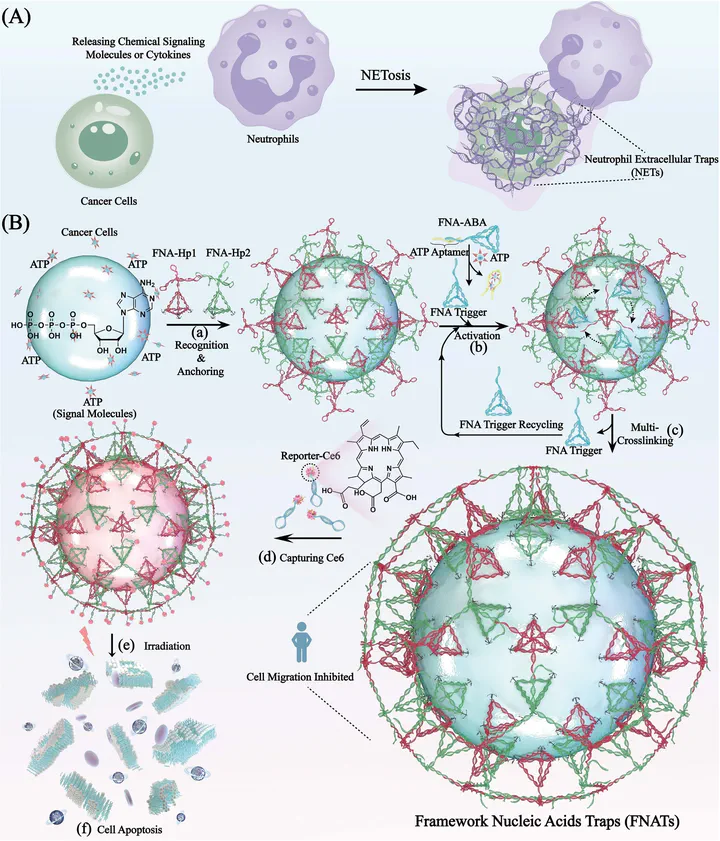NETosis-Inspired Cell Surface-Constrained Framework Nucleic Acids Traps (FNATs) for Cascaded Extracellular Recognition and Cellular Behavior Modulation

Abstract
Upon pathogenic stimulation, activated neutrophils release nuclear DNA into the extracellular environment, forming web-like DNA structures known as neutrophil extracellular traps (NETs), which capture and kill bacteria, fungi, and cancer cells. This phenomenon is commonly referred to as NETosis. Inspired by this, we introduce a cell surface-constrained web-like framework nucleic acids traps (FNATs) with programmable extracellular recognition capability and cellular behavior modulation. This approach facilitates dynamic key chemical signaling molecule recognition such as adenosine triphosphate (ATP), which is elevated in the extracellular microenvironment, and triggers FNA self-assembly. This, in turn, leads to in situ tightly interwoven FNAs formation on the cell surface, thereby inhibiting target cell migration. Furthermore, it activates a photosensitizer-capturing switch, chlorin e6 (Ce6), and induces cell self-destruction. This cascade platform provides new potential tools for visualizing dynamic extracellular activities and manipulating cellular behaviors using programmable in situ self-assembling DNA molecular devices.
Type
Publication
Angewandte Chemie International Edition
Click the Cite button above to demo the feature to enable visitors to import publication metadata into their reference management software.
Create your slides in Markdown - click the Slides button to check out the example.
Add the publication’s full text or supplementary notes here. You can use rich formatting such as including code, math, and images.